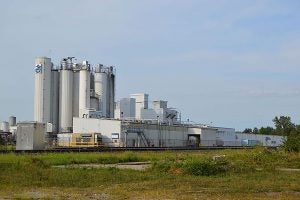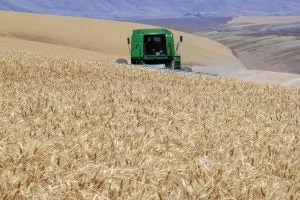Are carbon credits the next crop to be harvested by farmers?
Some companies are putting up money to get farmers to participate in “regenerative“ farming practices so they can claim they are offsetting their emissions. Other companies are engaging in brokering credits, selling them to emitters and buying them from farmers who qualify according to their carbon sequestration practices, and reserving a profit for themselves for brokering the transaction, of course. The first company to try such an exchange in the early 2000s, the Chicago Climate Exchange, paid farmers to adopt carbon sequestering practices, and sold them to greenhouse gas (GHG) emitters.
Farmers eager to try this new crop flooded the market with offers while buyers were not apt to buy. Prices crashed, and the brokerage collapsed.
General Mills has a program to pay farmers a set fee for following certain “regenerative” practices. They plan to enlist a million acres, and, supposedly, offset their own GHG emissions by 2030. I say “supposedly” because there is no accurate way to prove the amount of carbon sequestered (I’ll explain later). Kellogg’s has a similar program. So also does Bayer. Bayer’s goal is to promote sustainability and to reduce field GHG by 30 percent.

How do these programs propose to reduce GHGs? By reducing fertilizer and pesticide applications. By rotating crops in a three-year or more rotation. By adding livestock as a farm enterprise. Or cover crops. And the biggest: By reducing tillage, a practice already used on millions of acres.
Indigo Ag, a company specializing in biological products, offers farmers a set price for initiating certain practices like cover crops. These become a Carbon Credit Reserve, which is then sold to emitting companies. Indigo claims they share about 75 percent of the revenue with participating farmers. The problem here, as with all these credit programs, is proving carbon is sequestered in soil long-term. Indigo relies on third-party verification that practices paid for have been applied and soil carbon sequestered is real, permanent, and additional. The “additional” is hard to prove, as it can take decades to make an accurate measurement of additional soil organic carbon (SOC).
Organic matter calculations can be skewed to the positive by including refuse that is fresh or partly decayed. As a rule of thumb, crop refuse has a half-life of one year, meaning half of it will decay the first year, half of what’s left will decay in the second year, and so on until the last 10 percent which is very resistant to decay and can be considered a true addition to SOC. This resistant refuse, will continue to decompose at 1 to 2 percent per year, taking 50 to 100 years for soil microorganisms to fully dismantle it and release the nutrients for use by plants.
A 12-inch soil slice will weigh about 3.5 million pounds, and if it contains 2.5 percent resistant organic matter (humus), that amounts to 87,500 pounds. Humus will contain about 60 percent carbon. So this one-foot slice of soil will contain 26 tons (52,000 pounds) of carbon. Each year about 2 percent (0.52 tons) will be respired as carbon dioxide (CO2) and eventually returned to the atmosphere. Carbon accounts for 27.27 percent of the weight of CO2, so, in this example, 0.52 tons of carbon expired amounts to 1.9 tons of CO2 per acre per year released from decomposition of humus.

How much carbon will a 100-bushel wheat crop, no-tilled and all residue left on the surface, add to the stores of humus per year? Modern short-strawed varieties typically have a grain-to-straw ratio of 1 to 1.7. A 100 bushel crop (6,000 pounds), then, would produce 10,200 pounds of above-ground refuse. Root contribution to soil organic matter is, according to research by Drs. Stewart Wuest and Hero Gollany at the Pendleton Agriculture Research Center, is 1.6 times that of above ground residue.
Combining the two sources yields 26,520 pounds of raw organic matter from a 100-bushel crop. If 10 percent is ultimately added to the soil humus, containing 60 percent carbon, 0.8 tons of carbon will be added to SOC. That will represent the removal of 3 tons of CO2 from the atmosphere per acre per crop year. (Legume crops will sequester much less SOC per crop.) But 0.52 tons of old SOC expired during the crop year — that must be subtracted, so the net gain in SOC is 0.28 tons, representing a net atmospheric removal of 1 ton of CO2.
So, theoretically, a 100-bushel wheat crop should add about 1 percent to the SOC. But it is not an instant addition. Before an OM reading is taken, raw, visible residue is removed — it has not had time to become an addition to SOC. It may take decades for a scientifically significant measurable addition to occur.
Carbon capture programs that are based on performance, i.e., OM increases, will not be reliable, and the payments based on such a program will not be reliable, in my opinion. Beware of claw-back clauses. Payments should be made on management practices, such as no-till or minimum till, cover cropping, rotation, etc.
A review of 25 long-term plot experiments by Powell, et al, found a trend for SOC increases from annual grain crops, but only 6 percent produced scientifically significant increases. But the authors did observe that small changes in SOC can have “disproportionately large impacts on soil physical properties such as aggregate stability, water infiltration rate” and ease of tillage. I have a field that has been in continuous wheat for 50 years, and I notice these changes while there has been no consistent increase in yearly OM soil tests.
Soil samples can vary widely depending on when and where in a field they are taken. Wuest found that soil samples taken every month within the same small plot varied as much as 16 percent in SOC over three years. So, again, payments for SOC sequester should be made on management systems, not actual SOC tests.
Jack DeWitt is a farmer-agronomist with farming experience that spans the decades since the end of horse farming to the age of GPS and precision farming. He recounts all and predicts how we can have a future world with abundant food in his book “World Food Unlimited.” A version of this article was republished from Agri-Times Northwest with permission.



